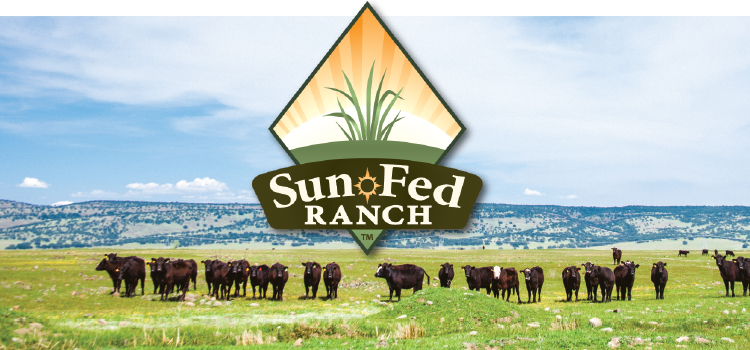SunFed Ranch grass-fed beef now at PCC
This article was originally published in May 2015

PCC is pleased to announce a new partnership with SunFed Ranch, which provides our stores with 100-percent grass-fed beef, both non-organic and organic.
About SunFed Ranch
SunFed Ranch’s founding ranchers, Matt Byrne and Chris Donati, represent the youngest generation of families that trace their ranching roots in California and Oregon back more than 100 years. They partner with other family ranchers in the Pacific Northwest and California to grow grass-fed beef in a way that sustains the land, the cattle and their families’ ranching businesses long-term.
The cattle are born and raised their entire lives in open spaces without confinement. In summer they graze on meadows of clover and legumes. In winter they’re rotated to pastures of native grasses in the Central Valley.
There are many benefits to rotational cattle grazing, including stabilizing the soil and promoting growth of native grasses while protecting against erosion and forest fires. The same land that provides feed and open space for ranging cattle also offers a home for many types of wildlife, including threatened and endangered species of fish, mammals, birds and plants.
“As environmental stewards, we’re committed to caring for our open spaces, watersheds, native plants and wildlife — today and for future generations,” says Byrne.
Why choose grass-fed?
One reason to choose SunFed Ranch’s grass-fed beef is that healthy cows that consume their natural diet of grass produce more healthful meat than cows fed grain. Grass-fed meat contains less fat and fewer calories, plus more nutrients such as conjugated linoleic acid, vitamins E and beta-carotene. It also offers two to four times higher levels of healthful omega-3 fatty acids than grain-fed beef.
Another reason to choose SunFed Ranch is the ranchers’ commitment to high animal welfare standards.
SunFed Ranch follows a strict animal welfare standard through every step in the production process. The processing plant for all the cattle also passes third-party humane handling audits.
“We know that proper livestock handling is not only ethical, but also supports our cattle’s health and well-being, resulting in the safest, highest-quality beef,” Byrne says. “We raise our cattle in a low-stress environment with room to roam each day of their lives and access to abundant grass and water.”
All SunFed Ranch cattle are raised on traditional family ranches and never are administered sub-therapeutic antibiotics or hormones.
When cows are sick, which is very rare, they’re treated with antibiotics to prevent suffering and removed completely from the organic program. They’re kept out of the non-organic supply chain for a minimum of 120 days to ensure a clean product.
SunFed Ranch’s organic cattle are USDA-certified and inspected to confirm they’ve never been administered growth-enhancing hormones or antibiotics and have grazed only on certified organic ranches managed without the use of synthetic pesticides.
Cooking grass-fed beef
Because it’s so lean, grass-fed beef must be cooked carefully or it will be tough. Grass-fed beef is intended for rare to medium-rare cooking, and it takes about 30 percent less cooking time than grain-fed. If you like well-done beef, then it’s best to stick with braising recipes.
For steaks
When pan-frying a steak, fully preheat the pan and use some oil to get a seared crust without overcooking. Use a similar technique on the grill, brushing the grates and meat with oil. Use a thermometer to determine when it reaches 5 to 10 °F below your final goal, then remove from the heat and place under a loose sheet of foil for five minutes, where it will finish cooking.
For burgers
Grass-fed beef is lean enough to benefit from added moisture in burgers. Try adding ingredients such as chopped shallots, finely minced onions or bite-sized bacon pieces when you form the patties. Make sure to oil the grates or pan before cooking.
For dry roasting
Choose brisket, rump roast or top sirloin, and reduce the temperature of your traditional recipe by 50°F. The cooking time may be a bit shorter, so rely on your thermometer to check for doneness.
For braises
Using chuck roast, sirloin tip or pre-cut stew meat is the way to go. The liquids will help prevent dryness, but go as low and slow as possible, whether you’re using your oven, stovetop or slow cooker.
